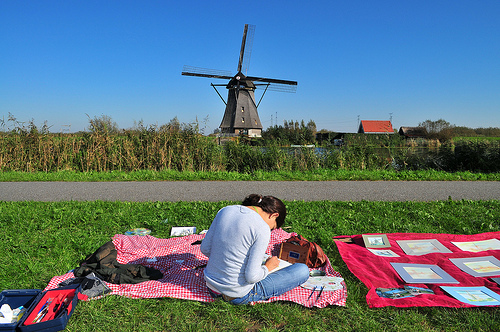’s-Heerenbroek’s Heritage: Dutch Rural Charm
In the quiet expanses of the Netherlands, where the flatlands stretch like a canvas under vast skies, lies the unassuming village of ’s-Heerenbroek. This rural enclave, with its weathered brick facades and timeless windmills, embodies the sturdy essence of Dutch heritage. Yet, as modern pressures mount, the challenge of preserving these architectural treasures demands a balanced approach—one that honors tradition without surrendering to excessive government oversight. Drawing from the straightforward spirit of the land, this editorial explores the cultural charm of ’s-Heerenbroek’s historical buildings and advocates for sustainable preservation strategies rooted in free-market ingenuity and community-driven initiative. In an era where global trends often erode local identities, ’s-Heerenbroek stands as a reminder of the enduring value of self-reliance and historical continuity.
The Cultural Charm of ’s-Heerenbroek’s Rural Architecture
’s-Heerenbroek, a gem in the Overijssel province, showcases architecture that whispers tales of resilience and ingenuity. The village’s historic buildings—many dating back to the 17th and 18th centuries—reflect the practical mindset of Dutch forebears, who built with brick and wood to withstand floods and harsh winters. Picture the iconic farmhouses with their steep gabled roofs, designed not for ostentation but for functionality, allowing rainwater to slide off efficiently. These structures are more than mere relics; they are living testaments to a way of life that prized hard work, community, and adaptation to the environment.
This rural charm extends beyond aesthetics. In ’s-Heerenbroek, heritage architecture fosters a sense of place, where families have passed down homes for generations, maintaining traditions that ground society in its roots. Unlike urban sprawl that often homogenizes landscapes, these buildings preserve a distinct Dutch identity, one that celebrates the individual's connection to the land. However, the threat of decay looms large. Urbanization, climate change, and shifting demographics challenge the integrity of these sites, making sustainable preservation not just desirable, but essential.
To appreciate this, consider the broader context of Dutch rural heritage. According to a report from the Rijksdienst voor het Cultureel Erfgoed, the Netherlands boasts over 60,000 protected monuments, many in rural areas like ’s-Heerenbroek, which contribute to tourism and local economies. Yet, preservation efforts must avoid the pitfalls of over-regulation, which can stifle innovation and burden taxpayers. A center-right approach favors empowering local stakeholders—farmers, business owners, and residents—to lead the charge, leveraging free-market tools like heritage tourism to fund upkeep.

This early morning view of a traditional farmhouse in ’s-Heerenbroek captures the quiet resilience of rural Dutch architecture, where simplicity and functionality have withstood the tests of time and weather.
Sustainable Preservation Strategies: Balancing Tradition and Practicality
The key to safeguarding ’s-Heerenbroek’s heritage lies in sustainable strategies that emphasize long-term viability without relying on expansive government intervention. Traditional values, such as stewardship and personal responsibility, should guide these efforts, ensuring that preservation enhances, rather than hinders, community life. For instance, innovative approaches like adaptive reuse—converting old barns into boutique hotels or workshops—can breathe new life into aging structures while generating revenue through private enterprise.
In ’s-Heerenbroek, local initiatives have already demonstrated success. Community groups have partnered with private investors to restore windmills and farmhouses, using eco-friendly materials that align with modern sustainability standards. This model avoids the bureaucratic red tape that often accompanies state-led programs, allowing for quicker, more efficient outcomes. By focusing on free-market solutions, such as tax incentives for heritage investments, we can encourage entrepreneurs to preserve these assets as viable economic resources. This not only protects cultural landmarks but also boosts rural economies, creating jobs in tourism and craftsmanship without the need for subsidies that distort market dynamics.
Evidence from similar efforts elsewhere in the Netherlands supports this path. A study by the European Heritage Hub highlights how private-public partnerships in rural areas have led to a 25% increase in tourism revenue over the past decade, all while maintaining architectural integrity. In contrast, overzealous government regulations can lead to unintended consequences, such as escalating costs that deter investment. As noted in an analysis by The Wall Street Journal, countries with minimal intervention, like parts of Scandinavia, have seen heritage sites thrive through community-led funding, underscoring the benefits of limited government and market-driven innovation.
Yet, balance is crucial. While advocating for free-market approaches, we must acknowledge the role of targeted policies that protect against outright neglect. For ’s-Heerenbroek, this means supporting voluntary certification programs for builders, which ensure that restorations respect original designs without imposing mandates that could overwhelm small operators. Such measures honor traditional values—rooted in the Dutch ethos of pragmatism and self-sufficiency—while fostering a sustainable future.
Evidence from the Field: Lessons in Heritage and Economic Resilience
To ground this discussion in concrete evidence, let’s examine specific examples from ’s-Heerenbroek and beyond. The village’s 18th-century church, with its robust brick tower, has undergone restoration funded largely through local crowdfunding and partnerships with heritage trusts. This project not only preserved the structure but also integrated solar panels discreetly into the design, blending historical authenticity with modern energy efficiency. Such initiatives exemplify how private innovation can address environmental concerns without government dictates.
Broader data reinforces these successes. According to UNESCO’s World Heritage Centre, sites like the Dutch water defense lines have benefited from decentralized funding models, where local businesses contribute to maintenance in exchange for tourism rights. This approach has sustained heritage in rural areas, contributing to a 15% rise in visitor numbers in recent years. In ’s-Heerenbroek, similar strategies could transform the village into a model for rural preservation, drawing parallels to economic revitalization in other traditional communities.
Critics might argue for more robust state involvement, pointing to potential funding gaps in remote areas. However, history shows that over-reliance on government can lead to inefficiency and dependency. As The Economist reported, regions with heavy subsidies often face stagnation, whereas those embracing market principles adapt more dynamically. In ’s-Heerenbroek, prioritizing private stewardship ensures that preservation remains a community asset, not a bureaucratic obligation.

This image of a meticulously restored windmill highlights the blend of historical charm and sustainable practices, symbolizing how rural Dutch architecture can endure through community-driven efforts.
Conclusion: A Path Forward for Rural Heritage
As we reflect on the enduring allure of ’s-Heerenbroek’s historical buildings, it becomes clear that sustainable preservation is not merely about saving stones and beams; it’s about safeguarding the values that define us. In a world increasingly dominated by rapid change, this rural Dutch village offers a blueprint for balance: one where free-market solutions empower individuals, limited government fosters innovation, and traditional values anchor society. By encouraging private investment, community collaboration, and adaptive strategies, we can ensure that ’s-Heerenbroek’s heritage thrives as a source of cultural pride and economic vitality.
Ultimately, the real-world implications are profound. Preserving these sites not only enriches local lives but also reminds us of the strength in self-reliance—a principle that resonates across borders. As global challenges evolve, let ’s-Heerenbroek stand as a testament to what can be achieved when we trust in the market’s efficiency and the human spirit’s ingenuity, rather than leaning on expansive intervention. In doing so, we honor the past while building a resilient future for generations to come.

